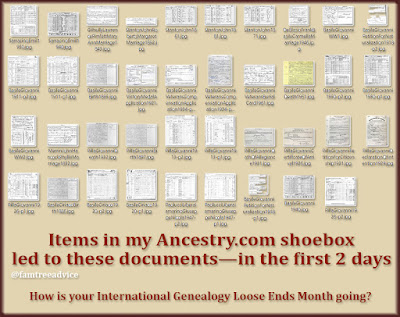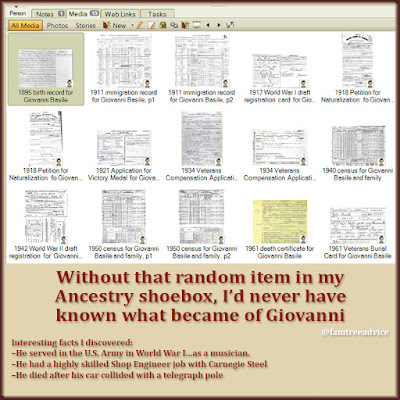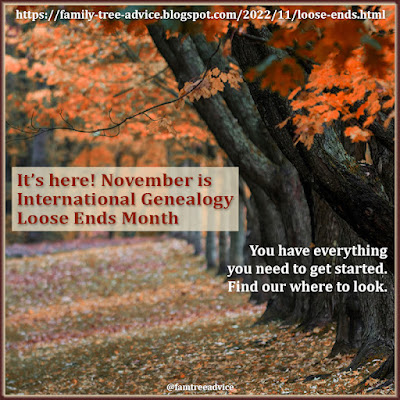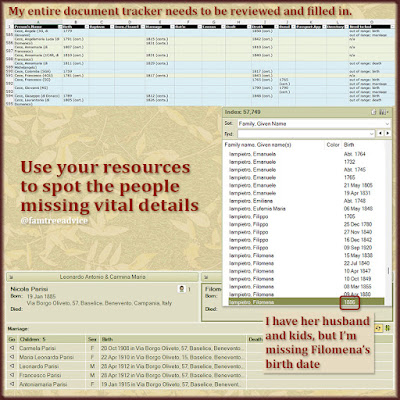I've been having such a productive month tying up loose ends in my family tree and in my genealogy tasks. I discovered lots of emigrants from my ancestral Italian hometowns. Then I gathered and added tons of documents for these people, including:
- ship manifests
- naturalization papers
- draft cards
- censuses
- death records
- family members
It felt great to "finish" these people as much as I can. And I know the descendants I added to my family tree will help me identify DNA matches.
These people were all leads I found in my Ancestry.com shoebox. I followed through on every saved lead—more than 100—until they were all gone. And I searched for every available document I could find for each person in the shoebox.
I downloaded so many new documents during the past two weeks! But I wanted to switch things up. For my next cleanup task, I wanted to avoid downloading anything new.
That's when I remembered my unfinished work with the 1950 U.S. Federal Census. That project fits the bill. Here are my current and next genealogy loose ends to tie up. I'll bet you can relate to these.
Recent Document Collections
Two critical document collections to come out recently are the 1950 U.S. census and the 1921 U.K. census. Have you downloaded and documented the most recent census forms for your family?
I've had a folder of 50 or more 1950 census forms on my computer since their release. Now, finally, I've cropped and renamed the images. I've also added the source information to each file's properties. They're 100% ready to add to my family tree.
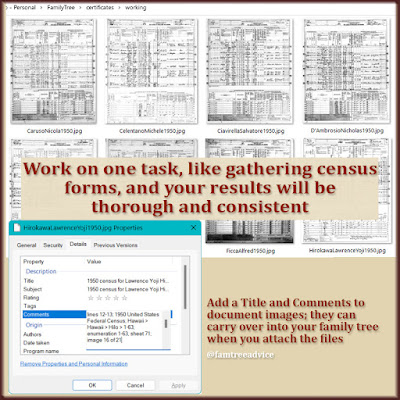 |
| Working on a bunch of census documents in one sitting keeps you consistent with your source citations. |
And I know what I'll do right after that's completed.
Image Enhancement
One of my pet peeves is a ton of black space at the edges of different genealogy records we can download. You wouldn't want to print that document, would you? It'll suck up all your printer's black ink or toner.
You can get rid of that waste by using photo editing software.
You also shouldn't tolerate document images that are either too light or too dark to read. You can fix those problems before you add the images to your family tree.
In recent years I've made a habit of fixing documents as best I can before putting them in my family tree. But I have lots of older documents in my tree that need improvement. One great example is World War I draft registration cards.
 |
| Don't keep all that awful black space that comes with some genealogy documents? Crop it out! |
There's almost always a thick black border around the image. And there's a huge black space between side one and side two of the draft card. Now I make sure to fix all that, but I have older draft cards I want to go back and replace.
To fix these draft card images:
- Surround and select the left-hand card and move it to the top left corner of the image.
- Surround and select the right-hand card and move it beside the left card.
- Crop the image and adjust the contrast if needed.
Take a look at your digital document collection. I'll bet you can find a lot that need improvement.
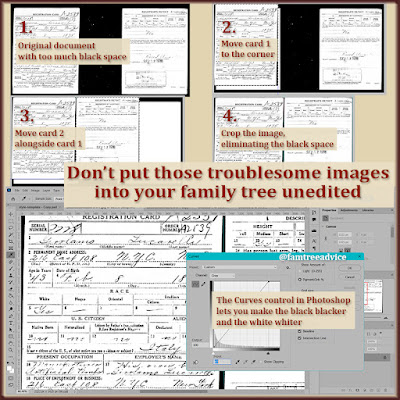 |
| If you know you can fix this genealogy documents, what's stopping you? |
These two tasks will keep me busy during this 3rd week of International Genealogy Loose Ends Month. I'm sure along the way I'll find more tasks I've been meaning to tackle. What about you?
